Hello and welcome! This is a sweet version of Jen Champions yoga for heart health. Please note, for today’s practice you will need a chair. We hope you enjoy.
Blog

Darwin Day
On February 12th, we commemorate the work of Charles Darwin, a renowned scientist, on Darwin Day.
His findings, experiments, and accomplishments in the world of science have greatly influenced our society today. During this day, we can reflect on his discovery of evolution, which revolutionized all scientific thinking and is now considered a foundational concept in science.
Charles Darwin is also known for his work regarding the understanding of natural selection and has been on dozens of expeditions, most notably to the Galapagos Islands where he made many startling discoveries.
His theories were at the center of many impactful works that we can look back on today. Remembering these pivotal icons of history can also teach us more about our world, the species around us, and the earth we live on.
We can recognize Darwin Day by celebrating that science is real and responsible for so many advances in our health, in our world and in our lives.
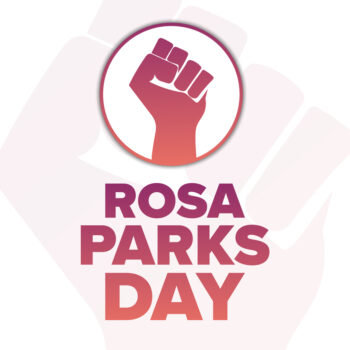
Rosa Parks Day
February 4th is a time to honor and celebrate the life of American Civil Rights hero Rosa Parks.
This day was made to commemorate the life of a woman who made a difference.
In 1955, Rosa Parks boarded a bus in Montgomery, Alabama, and took her seat in the bus’s assigned “colored” section. When the bus driver told her to give up her seat, she refused. Others before her had made similar refusals. But her action sparked the Montgomery Bus Boycott and became a symbol of the civil rights movement. She was an activist and collaborated with leaders in the movement.
Her actions inspired others to fight for equality and to challenge the system of oppression. She was proof that we can protest in our own ways and that we all have a right to say no.
It was a moment in time that continues to live on. We can celebrate this day by taking a moment to learn more about the Civil Rights Movement and the history of segregation in the United States.
Educating ourselves and our peers about the history of Rosa Parks will lead to open discussions about discrimination.
Learn more about the life of Rosa Parks by following the resources below:
I Shall Not Be Moved By Rosa Parks
I Shall Not be Moved By Maya Angelou (collection of poetry)
I Am Rosa Parks By Rosa Parks & James Haskins
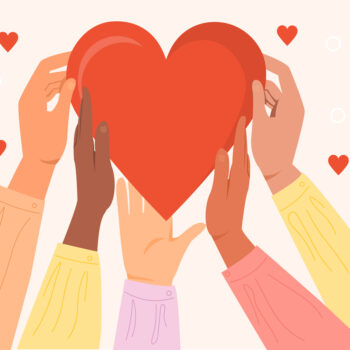
Random Acts of Kindness Day
February 17th is Random Acts of Kindness Day.
This day is all about taking the time to show others that you care. Not just to the people that you know – but strangers too. There are no limits to the amount of kindness we can show others.
To celebrate, you can find ways to incorporate meditation into your day.
Yoga instructor Amalia offers a guided practice to follow.
In the Buddhist tradition, there is a teaching about the god Brahma, who had four faces, one for each of the four kinds of unselfish love.
In the language of the Buddha, these are called Karuna (compassion), Upeksa (equanimity), Mudita (appreciative joy), and Metta, or Maitri (loving-kindness).
Because the god Brahma is said to dwell (vihara) in these four forms of love, they are known as the Brahmaviharas– or the divine abodes of the heart.
Abiding by these divine abodes of the heart every day may sometimes feel challenging, especially when you are exhausted or overwhelmed.
But it is not impossible to do. You can begin by offering loving-kindness to yourself during meditation.
Sit in a comfortable place and take two or three deep breaths with slow, complete exhales. Do your best to let go of concerns or preoccupations momentarily.
For a few minutes feel, or imagine your breath moving through the center of your chest- in the area of your heart.
When you’re ready, mentally repeat slowly and steadily, the following, or similar phrases:
“May I be happy. May I be well. May I be safe. May I be peaceful and at ease.”
When you say these phrases, allow yourself to sink into the intentions they express.
Loving kindness meditation consists primarily of connecting to the intention of wishing ourselves or others happiness.
Many of us have not been taught how to love ourselves. The culture we live in with its many systems of oppression, our families, and our life circumstances can all make this even more challenging to truly embody. Know that loving ourselves (and others) takes practice.
If feelings of warmth, friendliness, or love do arise in the body, connect to them, allowing them to grow as you repeat the phrases.
After a period of time (minutes, days, weeks, months, years) of directing loving-kindness toward yourself, bring to mind a friend or someone in your life who has deeply cared for you. Then slowly repeat the phrases of loving-kindness toward them:
“May I be happy. May I be well. May I be safe. May I be peaceful and at ease.”
As you say these phrases again, sink into their heartfelt meaning, and if any feelings of loving-kindness arise, connect the feelings with the phrases so that the feelings may become stronger as you repeat the words.
Over time, you can bring to mind other friends, neighbors, acquaintances, strangers, and finally, people with whom you have difficulty. You can either use the same phrases, repeating them again and again or make up your own that better represent the loving-kindness you feel toward these beings.
We all have opportunities to practice kindness, and it doesn’t require ideal circumstances or lots of resources.
The more we give love, the greater our capacity for loving. This is how, even through small actions, loving-kindness can become limitless.
Here are some ways you can start spreading kindness in your community.
- Send a text message, email, or snail mail, just to let someone know you are thinking of them.
- Add canned or packaged goods to a neighborhood food pantry, or donate a book to a little free library. If you have the resources, consider starting one of your own!
- Paint rocks with fun doodles or positive messages and leave them along sidewalks in your neighborhood.
- Deliver a home-cooked meal or order takeout for someone.
- Assemble and donate first aid supplies.
Eugene/ Springfield Specific:
Black Thistle Street Aid is a collective of outreach workers, herbalists & medical practitioners providing access to free healthcare through pop-up clinics and medical outreach to people experiencing homelessness in the Eugene-Springfield area. Find a list of items needed here
Visit the Acorn Community Cafe. A new vegan cafe, coffee shop and food resource on Monroe Street in Eugene, Oregon. Its mission is to combat hunger and build a resilient community. Cafe sales and community donations allow them to fund their daily free meals and expand into offering an employment program for unhoused or at-risk youth”.
Kindness is impactful and can inspire someone else to pay it forward.
“No act of kindness, no matter how small, is ever wasted.” – Aesop.
By: Amalia Trieger
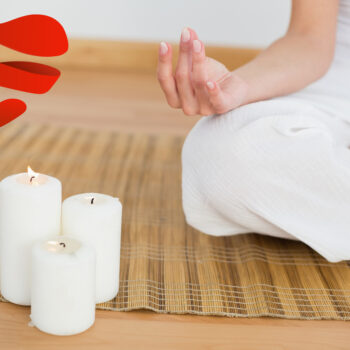
Love Is In The Air
Love is in the Air By: Jen Champion
February is the season of romance, especially with Valentine’s Day on the 14th.
It’s a sweet celebration of love that gives us a little break from the darker days during the winter months.
This holiday offers us an opportunity to show our loved ones how much we appreciate them. We can foster our connections and strengthen our relationships by expressing this love to our family, friends, and community.
Before exploring this idea of celebrating love, let us revisit the folklore around Valentine’s Day.
Legend has it that St. Valentine was a Roman Christian priest who performed marriages of young lovers to keep the men from being sent off to war.
When political authorities discovered that St. Valentine was doing this, he was imprisoned and martyred. Stories say he met the jailor’s daughter and fell in love with her. Then before his execution on February 14, 1269, he gave her a letter signed, “Your Valentine.”
Even after all years, this salutation lives on today.
We celebrate Valentine’s Day by giving our loved ones notes, flowers, and other gifts to remind them we care. Even exchanging dark chocolate is a traditional and contemporary gift good for health!
But our gifts can also go beyond material items.
Respect is also a gift to be fostered and shared. Having respect for others and for ourselves can lead us on the path of inner satisfaction and unconditional love.
When we respect ourselves, we can communicate and connect in kinder ways.
These qualities are gifts we can share with our companions and they contribute to the philosophy of “love thy neighbor.”
A hug is another gift that can be shared. By wrapping our arms around someone and holding them close, we can show them how much they mean to us.
This sincere gesture is good for our health as well. Science reveals that hugs lower stress hormones and blood pressure.
A hug held for 20 seconds releases oxytocin, a hormone referred to by scientists as the “cuddle hormone.” And a self-hug offers the same benefits while giving a nice stretch to the shoulders and upper back.
This Valentine’s Day, don’t forget to cherish yourself and others.
Thich Nhat Hanh expressed this beautifully when he said, “The teachings on love given by the Buddha are clear, scientific, and applicable… Love, compassion, joy, and equanimity are the very nature of an enlightened person. They are the four aspects of true love within ourselves and within everyone and everything.”
We can begin to lead with respect and love everywhere we go. It is vital to our overall well-being to live in a society that uplifts one another.
Want to incorporate more love into your everyday life?
Practice caring for yourself and loved ones: Cultivate self-awareness and appreciation by supporting others. This may be done through massage, therapeutic touch, pressure point therapy, mudras, positive affirmations, poems, music, and meditation.
Get comfortable with empathy: Relate to others by holding onto compassion during differences of opinion.
Listen to yourself to receive heartfelt affirmations: Affirmations are a positive forward-directed truth that we can connect with deeply. Create a paper heart of any style and write the affirmation on it. From here, we can write it repeatedly or create a tally to keep track every time we re-embrace these affirmations.
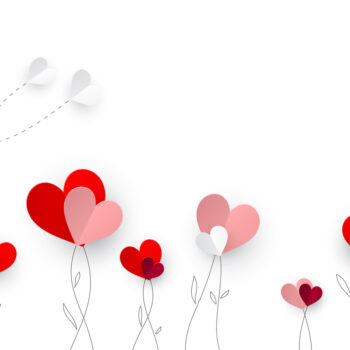
Celebrating Self Compassion This Valentine’s Day
Valentine’s Day is all about celebrating love, friendship, and admiration.
But love can come in many forms. It is not just about romance, but about showing care to those around you.
Love can be shared between family, friends, peers, and within ourselves.
With that being said, we encourage you to make room for self-compassion this month (and every month).
Here’s how…
Self Care
Having a spa day and pampering ourselves can be a great way to relax. You can eliminate distractions and refocus your attention on how you feel by treating yourself.
You can light some scented candles, draw a bath, or read a book you love.
Reach Out to Loved Ones
Connecting with the people who love us can be a way to give love back to ourselves.
Reminding ourselves of the people who are there for us can reinforce our self-love.
You can take a moment to call an old friend or video chat with a family member who makes you smile.
Do What You Love
Doing more of the things you love can give you a healthy outfit to explore your interests. You can either participate in activities you know you love or take the opportunity to try something new.
“To fall in love with yourself is the first secret to happiness.” – Robert Morley.
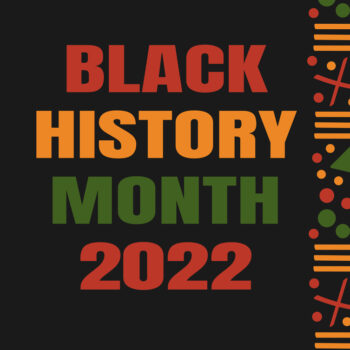
Black History Month
The month of February is Black History Month, which gives us the opportunity to celebrate the lives and achievements of the black community.
The origins for this began in 1915 when Carter G. Woodson and Jesse E. Moorland founded the Association for the Study of Negro Life and History (ASNLH). They advocated bringing more African American stories to life. This association still exists today, known as the Study of African American Life and History (ASALH). They continue to educate and inspire communities all over the country.
To celebrate Black History month, you can get to know the stories and struggles of the Black community throughout history. Learning the actual history and not the white-washed version will also help us all gain a better understanding of the vents in our past as a country as well as recognize systemic racism. The more we know, the more we can help bring about positive change.
Many noteworthy black figures and black voices have paved the way for change in our world. You can learn more by watching movies, reading books, and educating yourself about history.
Now is the time to attend virtual events, support black-owned businesses, and donate to charities fighting for anti-racism and equality.
Events in Oregon for Black History Month
Eugene
- UO African American Workshop and Lecture Series – “The University of Oregon African American Workshop and Lecture series connects national experts with UO thought leaders and change agents. It is focused on helping our campus better to understand the most promising practices in this area and utilizing their expertise to institutionalize more effective environments, practices, and policies.”
- UO Black History Month: Nuanced Noir – “Features a wide variety of events and activities engaging the myriad of identities and interests represented in our campus’s Black community. These events include Soul2Soul, an annual networking event at the Lylle Reynolds Parker Black Cultural center, multiple discussions exploring cultural trauma, a pop-up Black Excellence exhibit, a screening focused on Black American Sign Language, screening of “Public Plea,” and discussion around criminal justice reform in regards to Measure 11, and much more.”
- Peacehealth Stride for Social Justice App – “A PeaceHealth initiative developed in partnership with the Eugene Marathon – is designed to be a free, inclusive, family-friendly program that will engage and educate participants on the contributions, achievements, and milestones of Black residents of Lane County, and also highlight the injustices many have faced. Together we can stop the cycle of racism, building a more inclusive culture in the Pacific Northwest and beyond. It is only through awareness, understanding, and action that we can truly be part of the solution. And, only by looking back can we move forward.”
Salem (virtual)
- Oregon Black Pioneers: Racing to Change Exhibit – A previous museum exhibit that is now available virtually. Visitors of all ages and backgrounds will engage in the examination of the repression and violence against African Americans that made the Civil Rights Movement necessary. The exhibit explores how racist attitudes, policies of exclusion, and the destruction of Black-owned neighborhoods shaped Oregon, as well as the unceasing efforts of the Black community to overcome these obstacles.
Portland
- Portland Jazz Festival – (From local music organization PDX Jazz) celebrates Black History Month with a series of concerts and events presented over two weeks every February.
- Cascade Festival of African Films – Billed as the longest-running nonprofit African film festival in America, Portland’s free festival has celebrated African achievements and hopes for the future since 1991.
- Portland Trailblazers Annual Black History Month Celebration – Join the Portland Trail Blazers in their annual Celebration of Black History honoring Portland’s Black and African American community. The event consists of many amazing performances and multiple fundraising efforts. This year’s fundraising effort goes to help the Black Educational Achievement Movement (BEAM), a nonprofit with a mission to build relationships with the youth of African descent and help prepare them for the global marketplace.
- Support Black-Owned Restaurants A directory to restaurants in Portland
For more resources, visit the links below:
Black Lives Matter – a global organization in the US, UK, and Canada whose mission is to eradicate white supremacy and build local power to intervene in violence inflicted on Black communities by the state and vigilantes.
Four Black History Month Must-Haves – It’s not too late to put the best practices into place for honoring Black History Month in February and throughout the year.

Managing The Winter Blues
Do you ever catch yourself feeling blue when the sun sets earlier and the days and nights start to blend?
Even though we can spend time outdoors after work or school in the winter – we are far less likely if it’s dark and cold outside.
Spending day after day indoors for long periods of time can lead to what is commonly known as the winter blues.
But it can be managed, and we can flip the script.
Here’s how!
Take Action
Even when it’s cold outside, we can still incorporate the things we love into our routine.
Setting aside some time to go on a brisk walk (even if it’s only 10 minutes) can significantly impact your mood.
If going outside that day isn’t an option, there are several fun indoor activities you can try out as well, such as listening to a motivational podcast or journaling.
Celebrate Accomplishments
Celebrating all accomplishments (even the smaller ones) can help encourage us to keep going and help break up the day.
When you finish a task – don’t immediately move on to the next one.
Instead, you can set aside some time to feel proud of what you’ve done.
Doing so can give you more incentive to continue moving forward!
Do Something Special For Yourself
Every day is a good day to practice self-care and be kind to ourselves.
Small acts of kindness can go a long way. Especially the kindness we show ourselves.
Prioritizing what makes us happy can help us cherish every moment.

Mastering The Art of Motivation
Have you ever started a certain project excited and ready to take it on…
But as time went on, you started noticing your motivation dip?
It happens more often than you may think – especially with larger tasks.
Breaking tasks up into three sections: the begging, middle, and end can help make the overall process much easier.
The Beginning
Motivation comes from within, and it is often easier to get motivated while doing tasks we love.
Having to do something and wanting to do something are very different things.
Going into a project with a positive mindset from the very beginning can’t necessarily guarantee a smooth journey. But it will make it much more likely.
Starting a project with a positive attitude and a clear end in mind can help give you the drive to keep going even when it’s hard.
The Middle
Having a clear goal is the first step.
The second step is putting it into action.
Remember, you don’t have to finish everything on your list in one sitting.
In fact, it’s often ideal not to.
Our brain can only go for so long without a break.
Progress takes time. If you catch yourself starting to lose motivation at the halfway mark – take a break.
You may need an hour, or you may need a day. Listen to what your body is trying to tell you and respect its limits and the process.
The End
Not all of us get stuck in the middle of a task.
Some of us thrive during the start and middle but slowly start crashing towards the end.
Even though you’re so close to being done, all you want to do is walk away.
Staying motivated to finish a project is much easier said than done.
It isn’t all about willpower.
It’s about understanding your patterns and what makes you tick.
If you are the kind of person who needs regular breaks, take them!
If you are the kind of person who thrives working with music in the background, listen to music.
There isn’t a set-in-stone rule book for staying motivated. If there was, we’d all be following it.
When in doubt, follow your instincts and trust the process.

Gentle Yoga Online Class with Amalia (Thursdays at 11am)
In this class we will take time to settle into ourselves and to release some of the “shoulds” about how our bodies move through the world. Dominant culture pushes narratives on us about how we ought to think, love, look, eat, work, perform, and relate to one another. More and more people are recognizing the harmful impacts of these narratives, which equate our worth as humans with our productivity, and which center whiteness, thinness, ableism and many other damaging “norms”. The truth is that even folks who don’t identify with marginalized identities are impacted negatively by this narrow view of what is acceptable or good enough. The dissonance of these social constructs often shows up in our bodies, as fatigue, anxiety, pain, grief, rage, numbness, confusion, and fear.
In our gentle yoga practices, we create space for the unwinding and dissolving of these unhelpful narratives, as we unwind tension and stress from our bodies. We build strength and stability as we learn to trust our own wisdom, and form our own definitions of enough. We learn to be curious and open to wonder as we relinquish prescribed notions about how to live in our bodies, and the wider world.
This class will feature fewer transitions from the floor to standing, will have options for fully seated/chair-supported practices, and will move at an unhurried pace. Questions and requests are always welcome.

Reflect & Restore Online Yoga Class with Amalia (Fridays at noon)
Taught by our very talented yoga instructor, Amalia Coxe-Trieger. In her words, this class is informed by yoga philosophy and spiritual inquiry,and features embodied practices to support ease at all levels of being: Mental, physical, and emotional. Yoga has been used for centuries to help us engage with difficult social realities while centering on justice, truth, compassion, and service. In our world of never-ending newsfeeds and ongoing, and emerging global crises, these teachings are as relevant and as useful as ever.
We’ll explore a variety of movement modalities, meditation, and pranayama, (breathing techniques), sometimes with a dash of poetry thrown in! We will practice standing, seated, and on the floor, sometimes with longer holds and more restorative postures, and sometimes flowing from shape to shape. Accessible options and alternatives will usually be offered, though this class may move at a quicker pace than a gentle or beginning practice.
I hope you’ll find this class a welcoming place to cultivate a resilient mind, body and spirit, and to remember that even when life is seriously hard, we don’t always have to take ourselves too seriously!

International Holocaust Remembrance Day
“I swore never to be silent whenever and wherever human beings endure suffering and humiliation. We must always take sides. Neutrality helps the oppressor, never the victim. Silence encourages the tormentor, never the tormented.” -Elie Wiesel, Holocaust Survivor and author of “Night”.
On January 27, the world remembers the devastation of the Holocaust and how far hate and othering can go. The genocide took 6 million Jewish lives and millions more of other victims stemming from Nazi ideology.
Today, we can honor the lives lost by learning and remembering this part of history and find ways to support the prevention of future genocides. A step in that direction is as clear as Elie Wiesel’s words, that to be an ally is to be vocal against the suffering and humiliation of others.
To learn more about the International Holocaust Remembrance Day please visit these links for events and articles.


